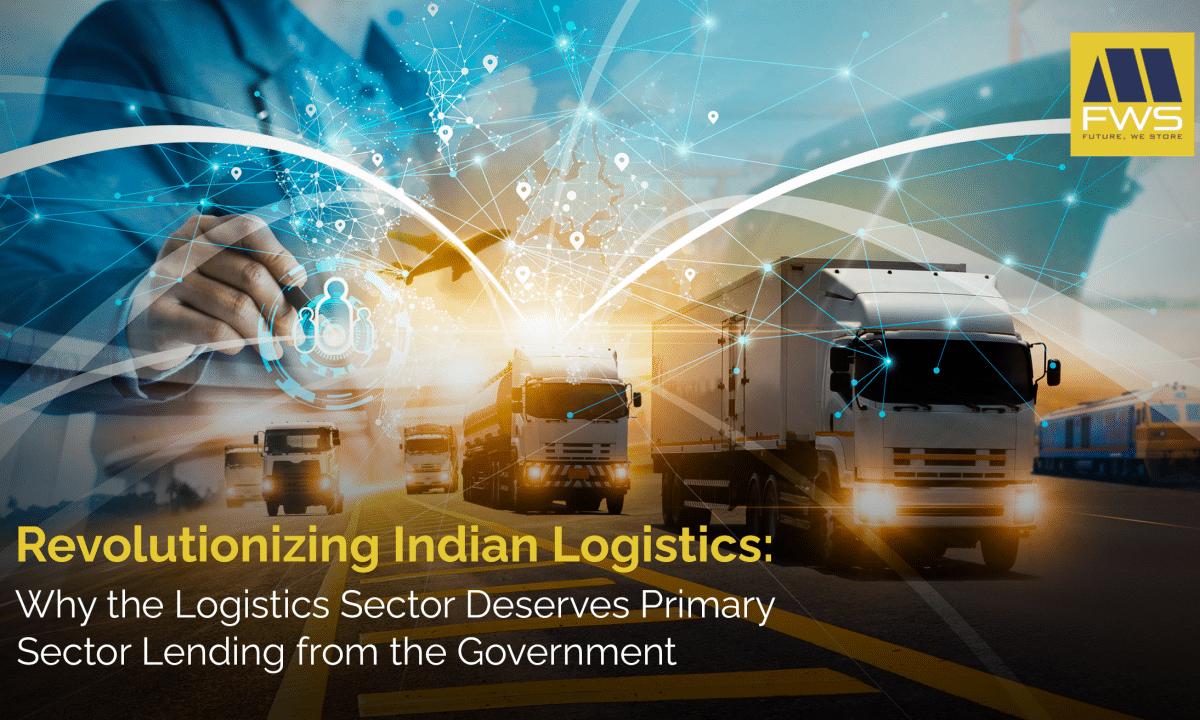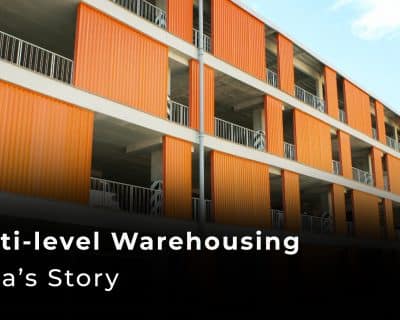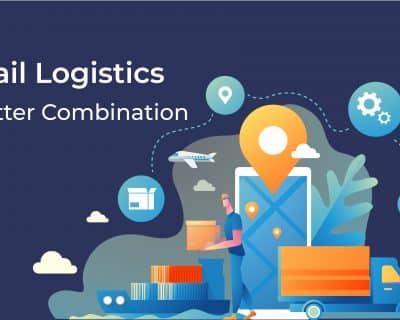Blog

Revolutionizing Indian Logistics: Why the Logistics Sector Deserves Primary Sector Lending from the Government
The logistics sector in India has witnessed remarkable growth in recent years. With the rise of e-commerce, the industry has become even more important and is expected to grow significantly in the coming years. India’s logistics sector is responsible for ensuring the smooth movement of goods from one place to another. It involves various activities such as transportation, warehousing, inventory management, and packaging. The logistics industry is critical for the growth of the Indian economy as it facilitates trade and commerce. According to a report by the Confederation of Indian Industry (CII), the logistics sector’s contribution to the GDP is around 13%, and it is expected to grow at a rate of 10-15% annually. However, the sector faces a number of challenges, including inadequate infrastructure, inefficient supply chains, and high operating costs. To address these challenges, the Indian government should consider providing primary sector lending to the logistics sector. In this blog post, we will discuss the reasons why the government should consider this and the benefits that it can bring.
What is Primary Sector Lending?
Primary sector lending refers to the provision of credit to the primary sector, which includes agriculture, horticulture, and allied activities. The primary sector is crucial to the Indian economy as it contributes significantly to GDP, employment, and exports. These loans are typically provided at a low-interest rate and are aimed at promoting the growth of the primary sector. The Reserve Bank of India (RBI) has set a target of providing 18% of net bank credit to agriculture and allied activities.
However, despite the importance of the primary sector, it still faces several challenges, such as inadequate infrastructure, lack of access to credit, and low productivity. To address these challenges, the government has introduced several schemes and initiatives such as the Pradhan Mantri Fasal Bima Yojana and the National Agricultural Market.
Why should the logistics sector be considered for primary sector lending?
In India, the logistics sector has been growing steadily in recent years, driven by factors such as rising domestic consumption, increasing exports, and government initiatives such as Make in India and Digital India. According to a report by the Economic Survey 2020-21, the logistics sector’s contribution to India’s GDP is around 13-14%. It also employs more than 22 million people in the country. The logistics sector is a critical component of the Indian economy. It plays a key role in the movement of goods and services across the country and is essential for the success of many industries. However, the sector faces a number of challenges that have hindered its growth. These challenges include inadequate infrastructure, inefficient supply chains, and high operating costs.
Providing primary sector lending to the logistics sector can help address these challenges and promote the growth of the sector. Here are some reasons why the government should consider this:
1. Infrastructure development
The logistics sector requires significant investment in infrastructure development, including roads, railways, and ports. Primary sector lending can help finance these infrastructure projects and create the necessary infrastructure to support the growth of the sector.
2. Cost reduction
The logistics sector is characterized by high operating costs, including transportation, warehousing, and inventory management. Primary sector lending can help finance cost-reduction initiatives, such as the development of efficient supply chains, the adoption of technology, and the use of automation.
3. Job creation
The logistics sector has the potential to create a large number of jobs, especially in rural areas. Primary sector lending can help finance the development of logistics hubs and the creation of employment opportunities in the sector.
4. Increased competitiveness
The logistics sector is critical for the success of many industries, including agriculture, manufacturing, and e-commerce. Primary sector lending can help improve the competitiveness of these industries by enabling the development of efficient and cost-effective logistics solutions. It can also help finance initiatives aimed at improving the efficiency of the logistics sector, such as the adoption of technology and the use of automation.
5. Economic growth
The logistics sector is a key contributor to the Indian economy, accounting for over 13% of GDP. Primary sector lending can help promote the growth of the sector and drive overall economic growth.
Potential Benefits
Considering the logistics sector for primary sector lending can have several advantages. Firstly, it can help in improving the supply chain infrastructure, which can benefit the primary sector. For example, better transportation facilities can lead to faster and more efficient movement of agricultural produce from the farm to the market. Secondly, it can lead to the creation of new jobs in the logistics sector, which can benefit rural areas. Moreover, it can help in reducing wastage and spoilage of agricultural produce, which can lead to higher income for farmers. Finally, primary sector lending can also help promote sustainable growth by enabling the development of efficient and cost-effective logistics solutions. This can help reduce the environmental impact of the logistics sector and promote sustainable development.
The Challenges in Primary Sector Lending for Logistics
There are many prominent advantages of providing primary sector lending to the logistics sector, however, there are also challenges and risks associated with it that the government needs to consider. Firstly, it is a capital-intensive industry, and there is a risk of high default rates. Secondly, there is a lack of standardization and regulation in the logistics sector, which can lead to challenges in assessing creditworthiness. Finally, the logistics sector is highly dependent on external factors such as infrastructure and government policies, which can affect the profitability of the industry.
Concluding Thoughts
The Indian logistics sector has immense potential for growth and development. However, it has been facing several challenges, including high capital costs, inadequate infrastructure, and regulatory hurdles. By including the logistics sector in primary sector lending, the Indian government can provide much-needed financial support to the sector and help it achieve its full potential. Investing in logistics will not only improve the sector’s efficiency but will also have a positive impact on other sectors of the economy, such as manufacturing, agriculture, and retail. The government’s focus on digitalization, coupled with the growth of e-commerce, has opened up new opportunities for the logistics sector, which can be further harnessed with the right policies and support.
Therefore, the Indian government should consider including logistics in primary sector lending to facilitate the growth of the sector and support the overall development of the economy. By doing so, the government can create a more efficient and reliable logistics network, which will drive economic growth, and job creation, along with enhancing India’s position as a global trade hub.




